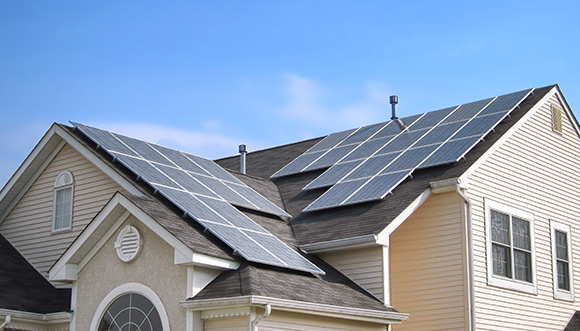Empowered by Efficient Energy
September 16, 2015

In the past couple of years energy costs in the U.S. have been on the rise. According to the U.S. Energy Information Administration (EIA), from 2013 to 2014 the average cost of energy increased by 3.2 percent. Now, the EIA shows that just in the past year it has escalated even more by an additional 2.8 percent. What does all of this mean? It means that residents and businesses are looking for energy-efficient solutions.
Reducing the cost of your energy bill in your own home can seem like an overwhelming task. You may be asking yourself, “Where do I start?” or, “What kind of products are out there to help me reduce energy costs?” Here are five energy-efficient changes that will help lower the cost of your next energy bill, and keep it low for the next decade or two.
1. Solar Panels The advantages of switching to solar panels do not solely rest on the benefit of cutting costs, but also in helping the community. Solar-is-future.com says that solar cells last anywhere from 20-25 years, have no moving parts, and release no forms of pollution. They sever your reliance on power grids for daily electricity and allow houses and businesses to enjoy power in remote, distant locations.
2. High-Efficiency Furnace/Air Conditioner If you have considered switching to a more energy-efficient furnace or air conditioner and you live in a place with really hot summers or very cold winters, this is the way to go. Carney Plumbing, Heating, and Cooling explains that high-efficiency equipment may cost a little more up front, but your monthly savings will make up for the initial cost in a shorter amount of time than you may think.
3. High- Efficiency Windows/Doors Replacement windows and doors that are considered highly efficient can yield a 72-78 percent return on investment, according to houselogic.com. That’s because you are saving money by putting an end to draftiness, sticky frames, and high energy bills, and you are also increasing the value of your home by thousands of dollars.
4. Insulation Older homes are not as well-insulated and energy-efficient as the ones built today. The rule of thumb that energy.gov provides explains if your home was built more than fifteen years ago, you should consider getting the insulation assessed. The purpose of the assessment is to know exactly where your house needs another layer, a replacement layer, or a different kind of insulation. By appropriately insulating your home, you will notice an immediate reduction in your energy bill.
5. Gas Fireplace While they create a cozy atmosphere, wood fireplaces are not as energy-efficient as gas fireplaces. According to houselogic.com, when using wood fireplaces, about 90 percent of the heat is sucked up into the chimney, which leaves little heat for keeping the house warm. On the other hand, gas fireplaces reflect more heat into the room. Also, most gas fireplaces have a temperature gauge and monitor that can be set to manage the temperature of the room thus saving energy.
Perhaps, some of the solutions listed above may seem out of reach, but not for our members. We believe in helping our members reach their goals in a timely manner. That’s why we are currently offering an Energy-Efficient Home Equity Line of Credit. You can use the equity in your home to transform your house into an energy-efficient masterpiece. For more details about our energy efficient loan product visit Energy Efficient HELOC
Author: Andrew Todd Sales Representative
References: Today In Energy Electricity Monthly Update How Long Will My PhotoVoltaic System Last Purpose of Solar Panels How Much Will a High Efficiency Furnace Save Me Replace Old Windows with Energy Efficient Models Adding Insulation to Existing Home Convert Fireplace to Gas

Comments